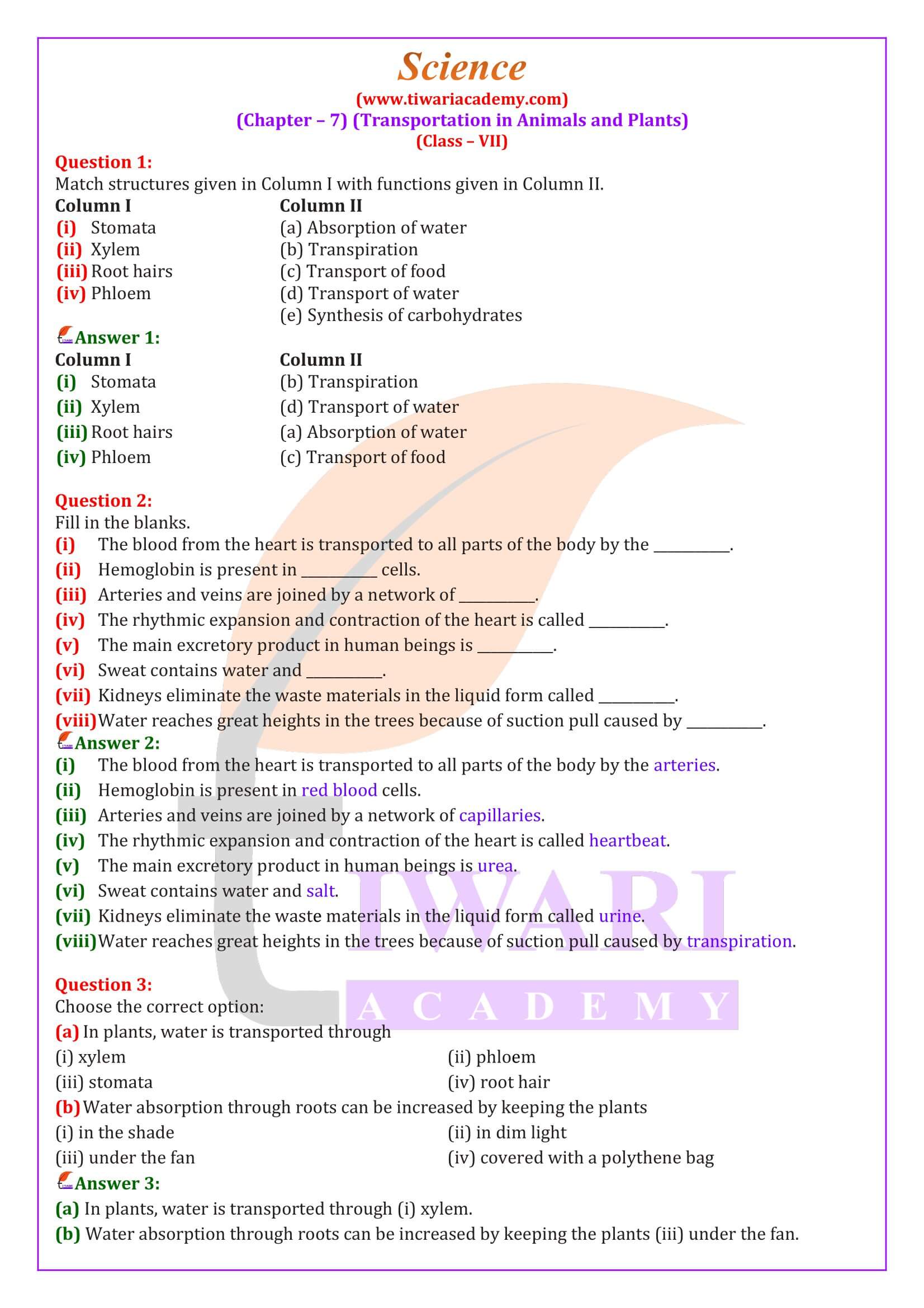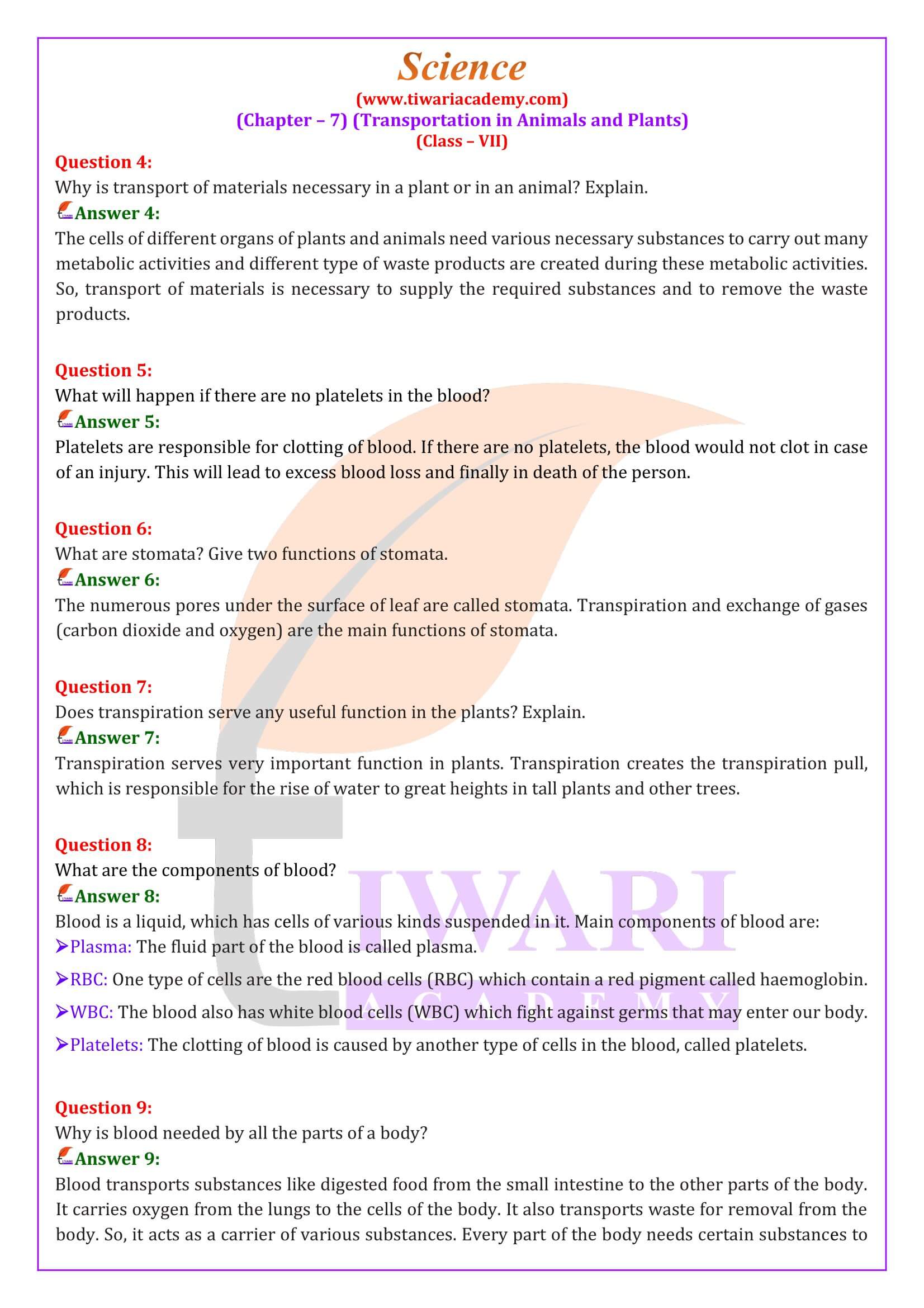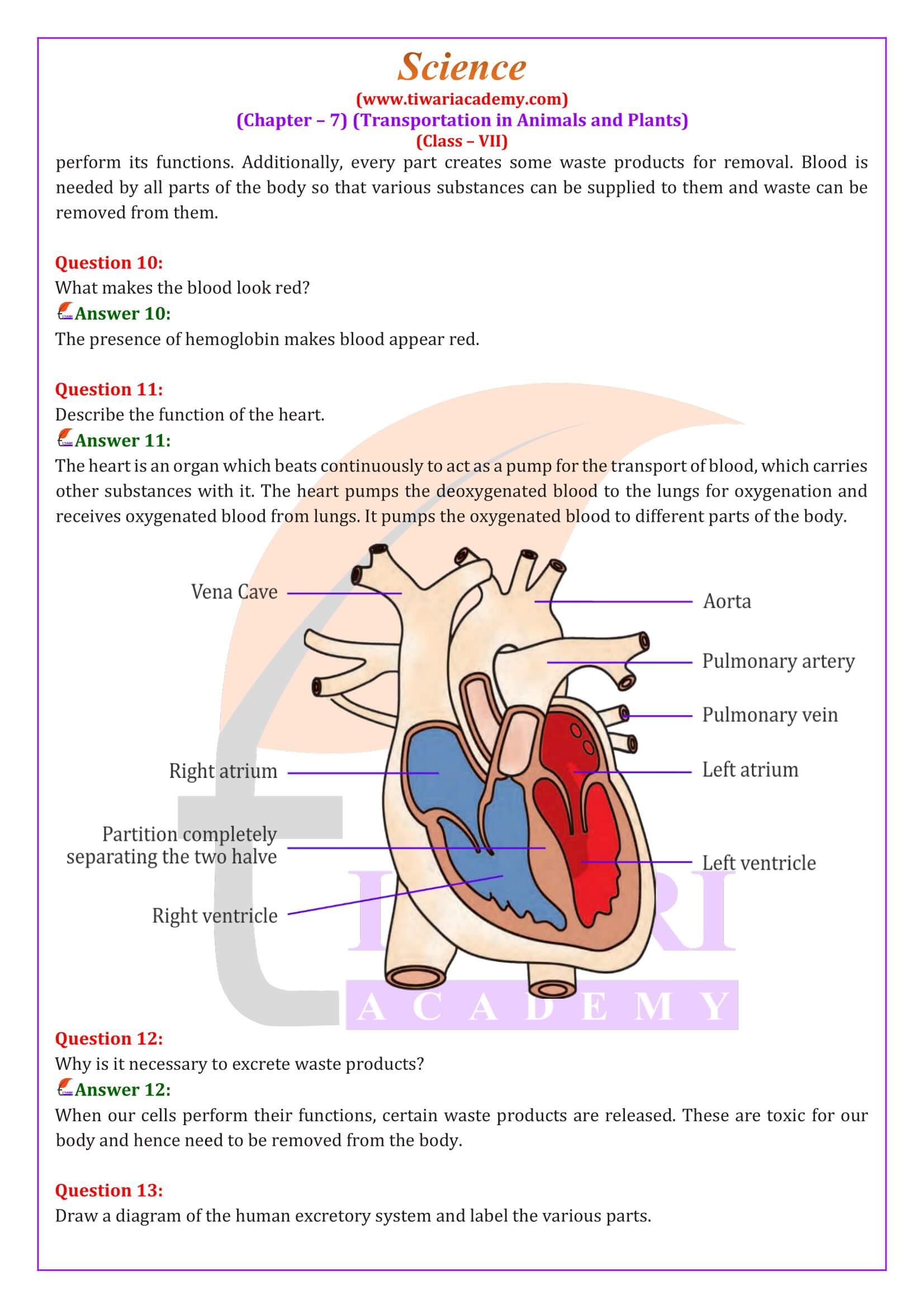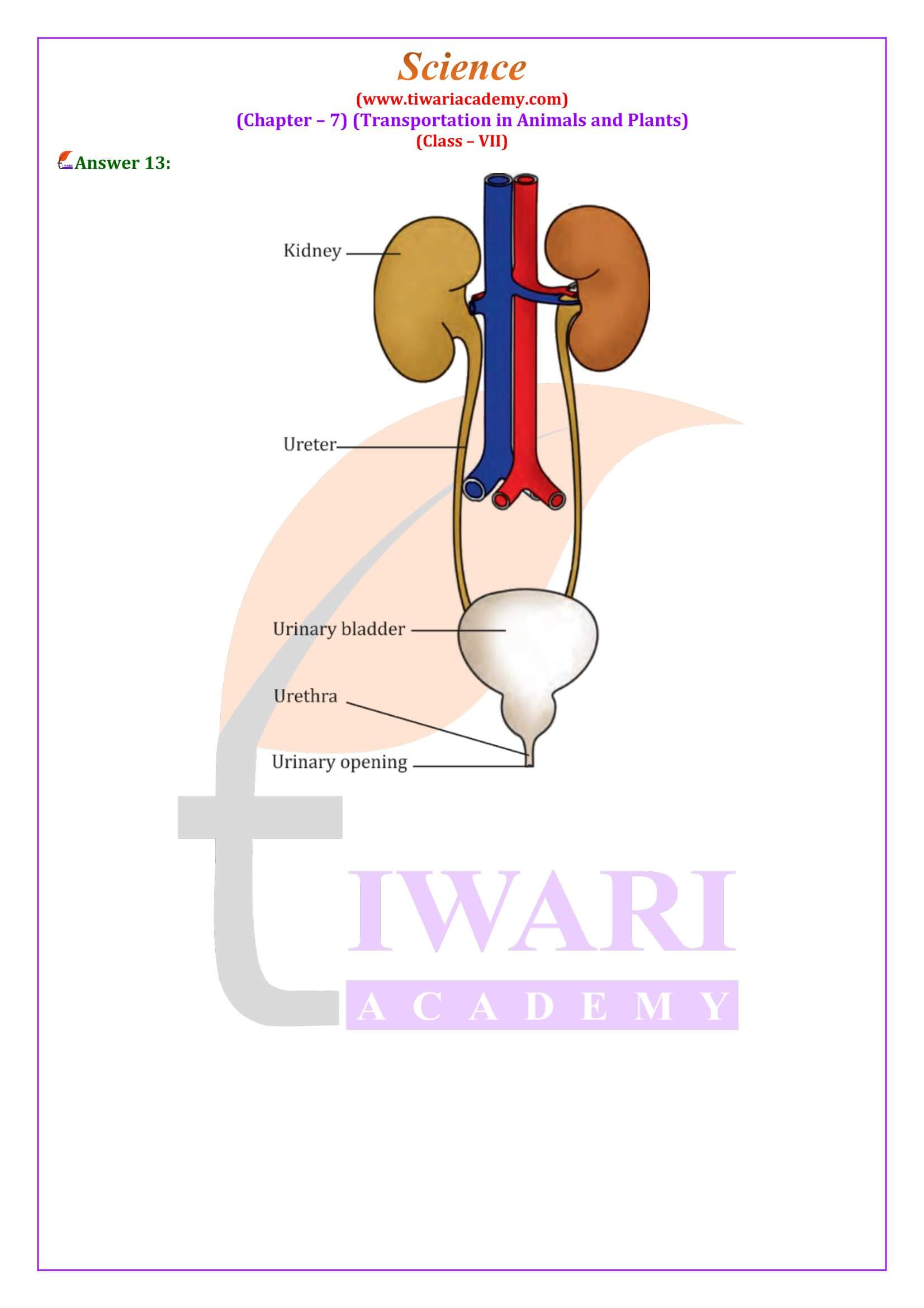Question Wise Class 7 Science Chapter 7 Solutions
Class 7 Science Chapter 7 Question Answers
Class 7 Science Chapter 7 in Hindi Medium
Class 7 Science Chapter 7 Extra Questions
Class 7 Science Chapter 7 MCQ
Class 7 Science Chapter 7 NCERT Book
NCERT Solutions for Class 7 Science Chapter 7 Transportation in Animals and Plants in English Medium or in Hindi Medium free to download in PDF file for offline use or view it online for 2025-26. Video Format of NCERT Solutions are based on new NCERT Books published for 2025-26. Visit to Discussion Forum to Share Your View with your classmates and others.
| Class: 7 | Science |
| Chapter 7: | Transportation in Animals and Plants |
| Content: | MCQ, Exercises and Extra Questions |
| Session: | 2025-26 |
| Medium: | Hindi and English |
Class 7 Science Chapter 7 NCERT Solutions
Class 7 Science Chapter 7 Answers
CBSE NCERT Solutions for Class 7 Science Chapter 7 Transportation in Animals and Plants is given below to use online or of download in PDF. Download Books and other study materials for this academic session 2025-26 free.
Class 7 Science Chapter 7 Explanation and Solution in Videos
Important Questions on 7th Science Chapter 7 for Practice
1. The absorption of nutrients and exchange of respiratory gases between blood and tissues takes place in
(a) veins
(b) arteries
(c) heart
(d) capillaries
2. The muscular tube through which stored urine is passed out of the body is called –
(a) kidney
(b) ureter
(c) urethra
(d) urinary bladder
3. In a tall tree, which force is responsible for pulling water and minerals from the soil?
(a) Gravitational force
(b) Transportation force
(c) Suction force
(d) Conduction force
4. They are pipe-like, consisting of a group of specialised cells. They transport substances and form a two-way traffic in plants. Which of the following terms qualify for the features mentioned above?
(a) Xylem tissue
(b) Vascular tissue
(c) Root hairs
(d) Phloem tissue
5. In which of the following parts of human body are sweat glands absent?
(a) Scalp
(b) Armpits
(c) Lips
(d) Palms
6. Aquatic animals like fish excrete their wastes in gaseous form as
(a) Oxygen
(b) Hydrogen
(c) Ammonia
(d) Nitrogen
7. What is the special feature present in a human heart which does not allow mixing of blood when oxygen-rich and carbon dioxide-rich blood reach the heart?
8. Arrange the following statements in the correct order in which they occur during the formation and removal of urine in human beings.
(a) Ureters carry urine to the urinary bladder.
(b) Wastes dissolved in water is filtered out as urine in the kidneys.
(c) Urine stored in urinary bladder is passed out through the urinary opening at the end of the urethra.
(d) Blood containing useful and harmful substances reaches the kidneys for filtration.
(e) Useful substances are absorbed back into the blood.
Answers of Important Questions
1 (d)
2 (c)
3 (c)
4 (d)
5 (c)
6 (c)
7. Heart is partitioned into four chambers.
8. Order: (d), (e), (b), (a), (c).
Important NCERT Questions Class 7 Science Chapter 7
Why is transport of materials necessary in a plant or in an animal? Explain.
The cells of different organs of plants and animals need various necessary substances to carry out many metabolic activities and different type of waste products are created during these metabolic activities. So, transport of materials is necessary to supply the required substances and to remove the waste products.
What are stomata? Give two functions of stomata.
The numerous pores under the surface of leaf are called stomata. Transpiration and exchange of gases (carbon dioxide and oxygen) are the main functions of stomata.
Does transpiration serve any useful function in the plants? Explain.
Transpiration serves very important function in plants. Transpiration creates the transpiration pull, which is responsible for the rise of water to great heights in tall plants and other trees.
What makes the blood look red?
The presence of haemoglobin makes blood appear red.
Describe the function of the heart.
The heart is an organ which beats continuously to act as a pump for the transport of blood, which carries other substances with it. The heart pumps the deoxygenated blood to the lungs for oxygenation and receives oxygenated blood from lungs. It pumps the oxygenated blood to different parts of the body.





